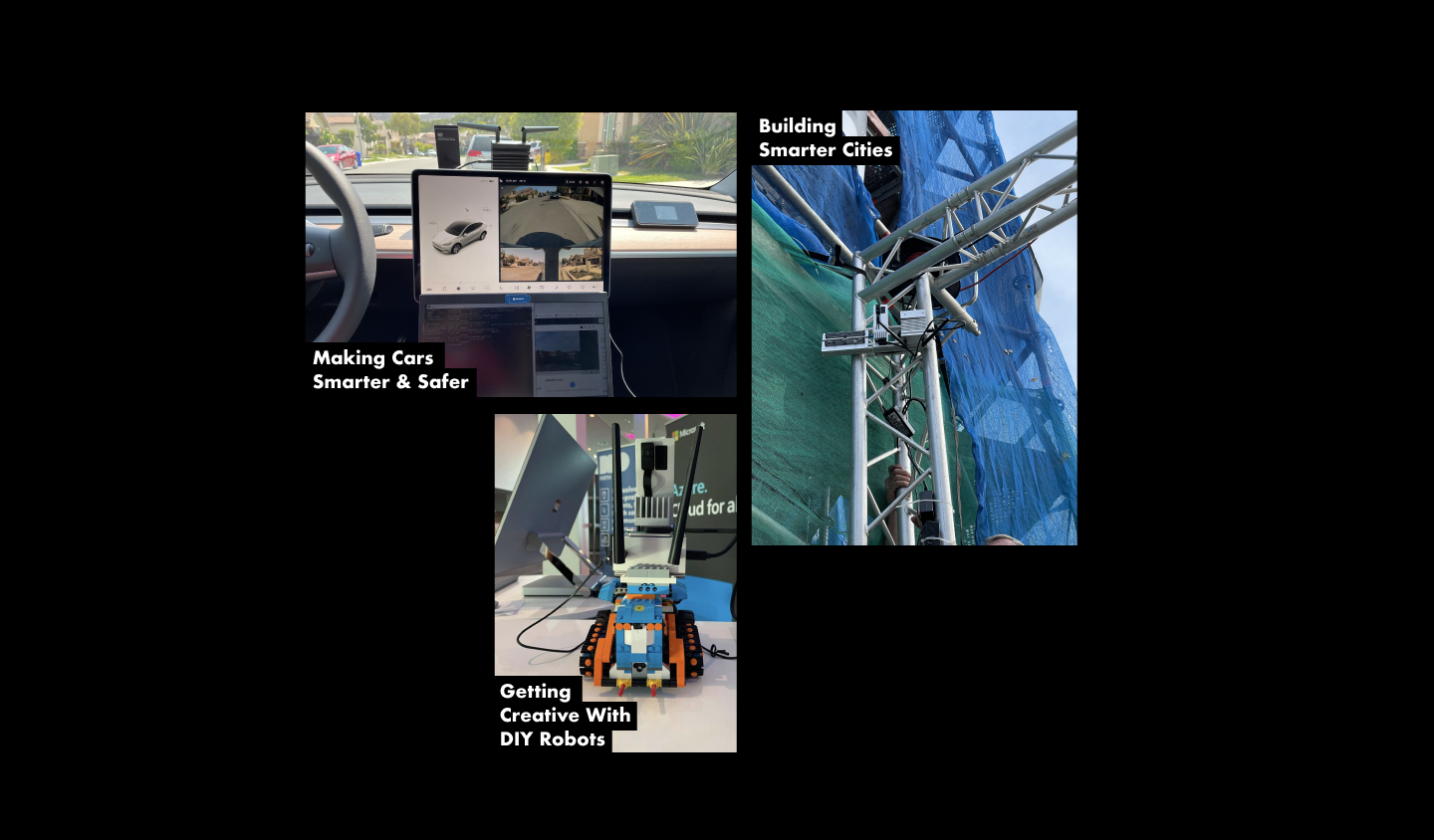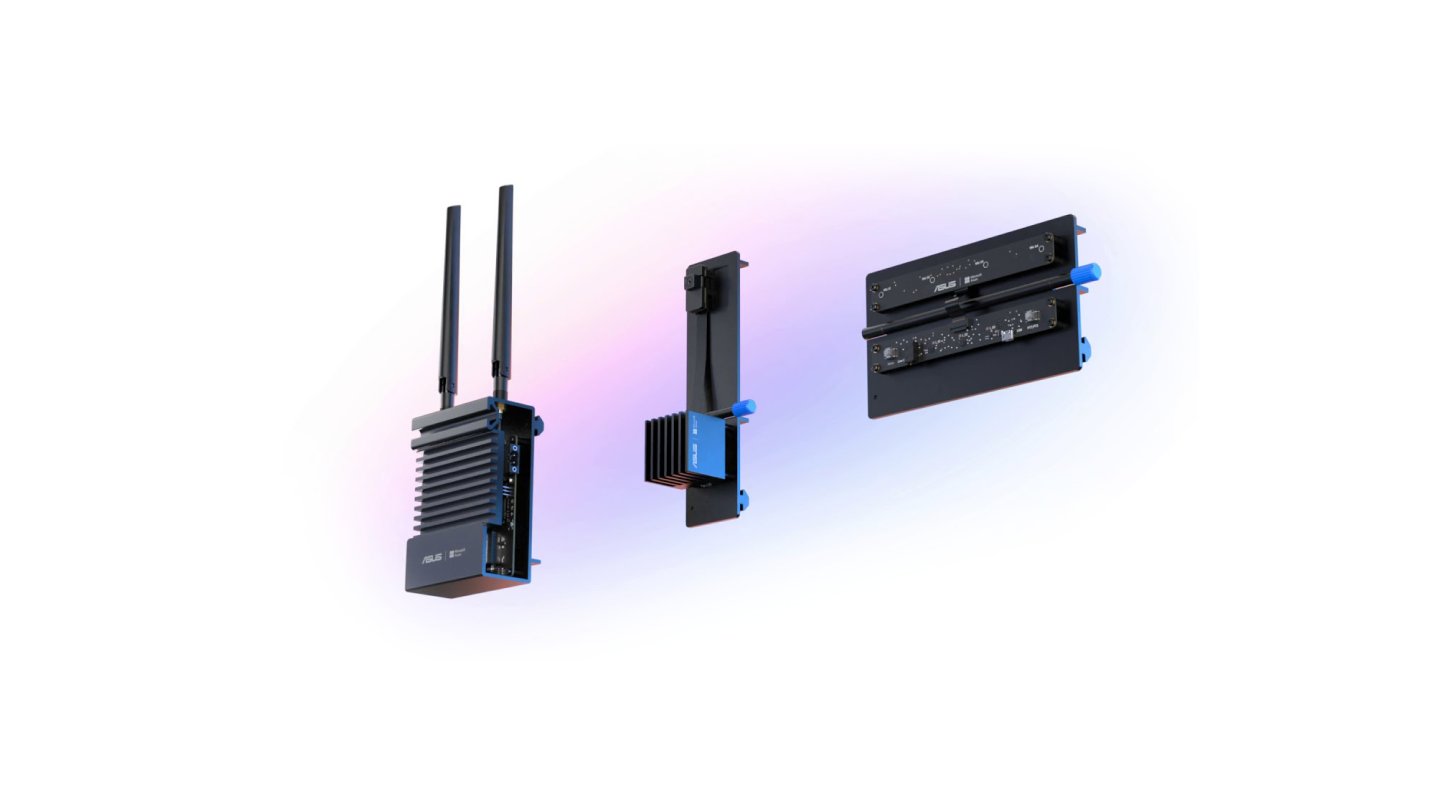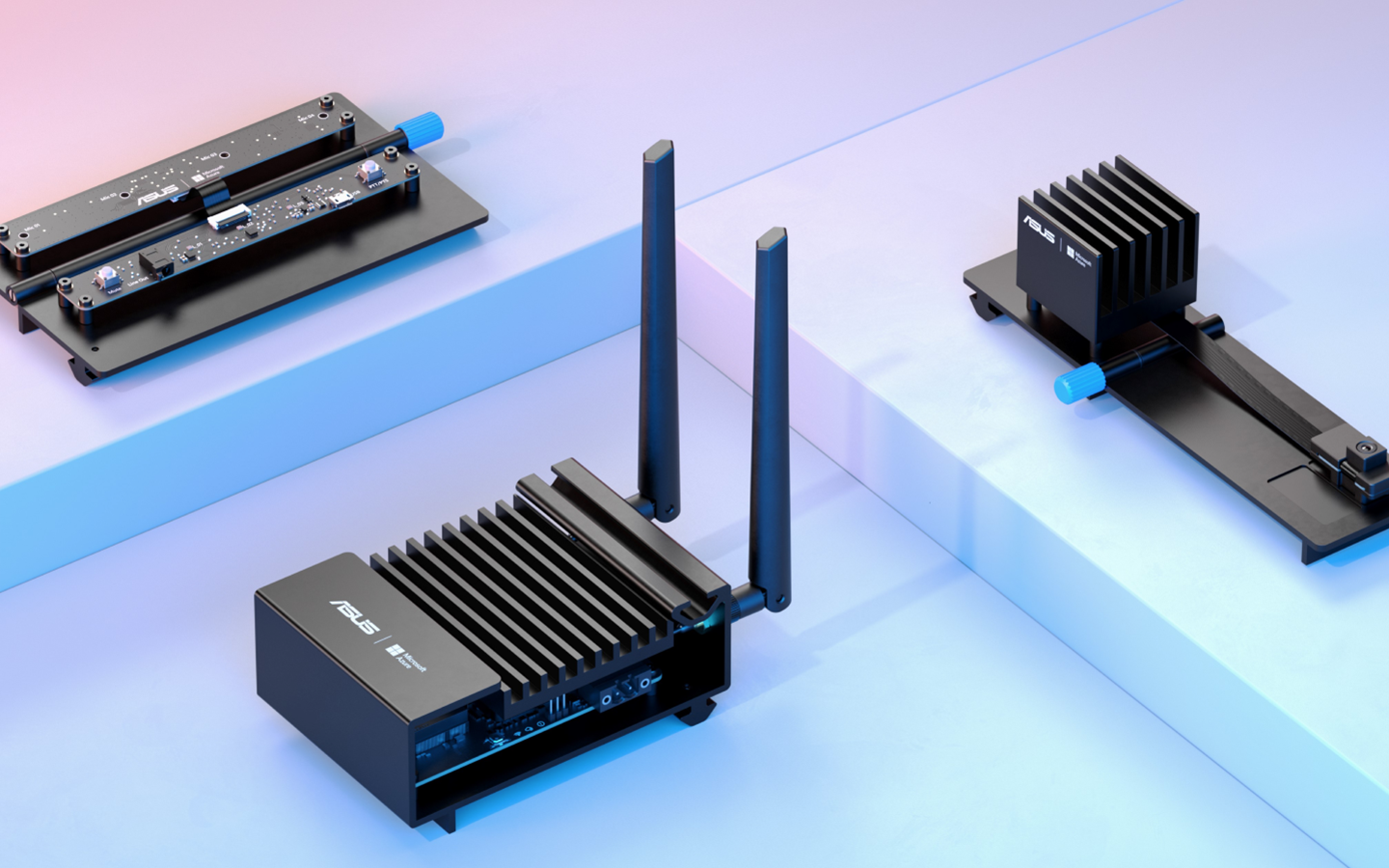
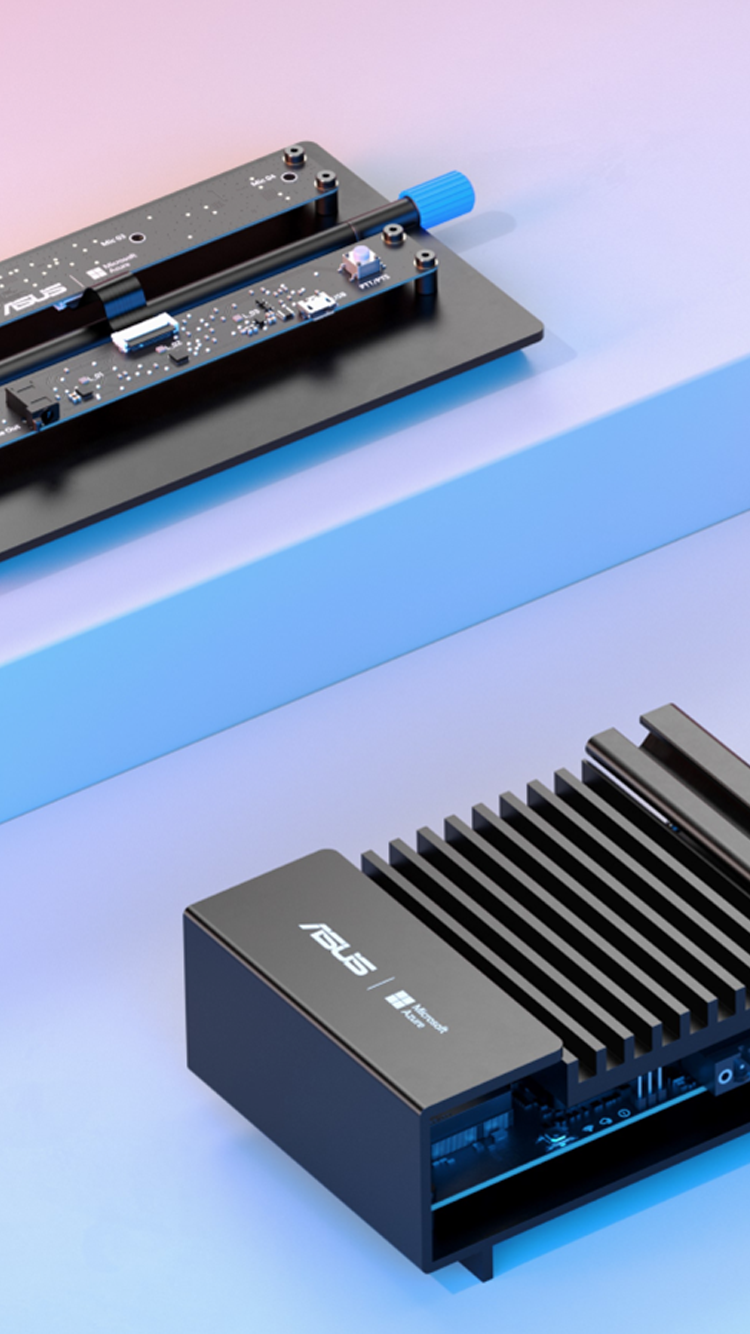
Microsoft
Azure Percept
Development Kit
In their mission “to empower every person and every organization on the planet to achieve more,” Microsoft’s Azure Percept Development Kit (DK) intends to do just that. Offered as a single, end-to-end system from hardware to AI capabilities, Azure Percept DK is a comprehensive platform of hardware and services aiming to simplify the various ways customers can use Azure AI technologies on the edge—including Azure cloud offerings such as device management, AI model development and analytics.
The new hardware platform is intended to be easy-to-use right out of the box without requiring advanced technical knowledge. Azure Percept DK integrates the industry standard 80/20 aluminum extrusion to provide flexibility in the development of new products while seamlessly fitting in with existing prototyping projects. To bring their vision to reality, Microsoft worked with Tactile to design the Azure Percept DK’s hardware to better streamline the setup, configuration, and connection of these smart devices with cloud-based AI models on the edge.

Azure Percept Studio
is a complete platform for easily creating edge AI solutions. Use an integrated collection of Azure services and tools designed for device provisioning, AI and machine learning deployments, and AI lifecycle management at the edge. Our design helps users prototype iOT data capture for their own projects and connect it to the cloud based tools available in Percept Studio.
Data In
- Vision and sound data from the world
Data Out
- object recognition and training
- speech to text
- audio processing
- depth sensing, space tracking

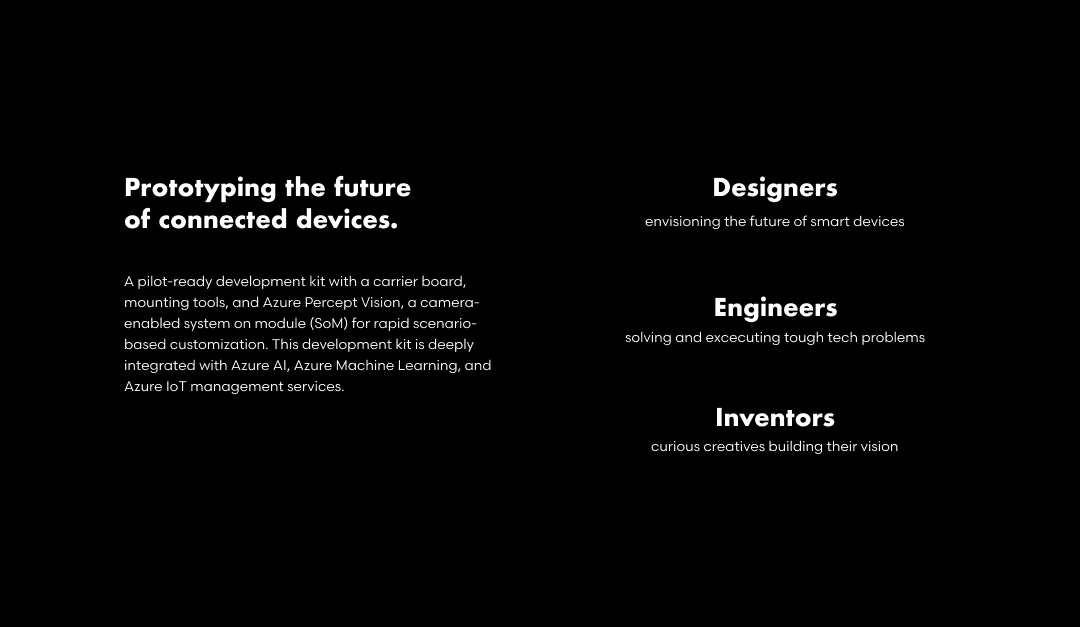

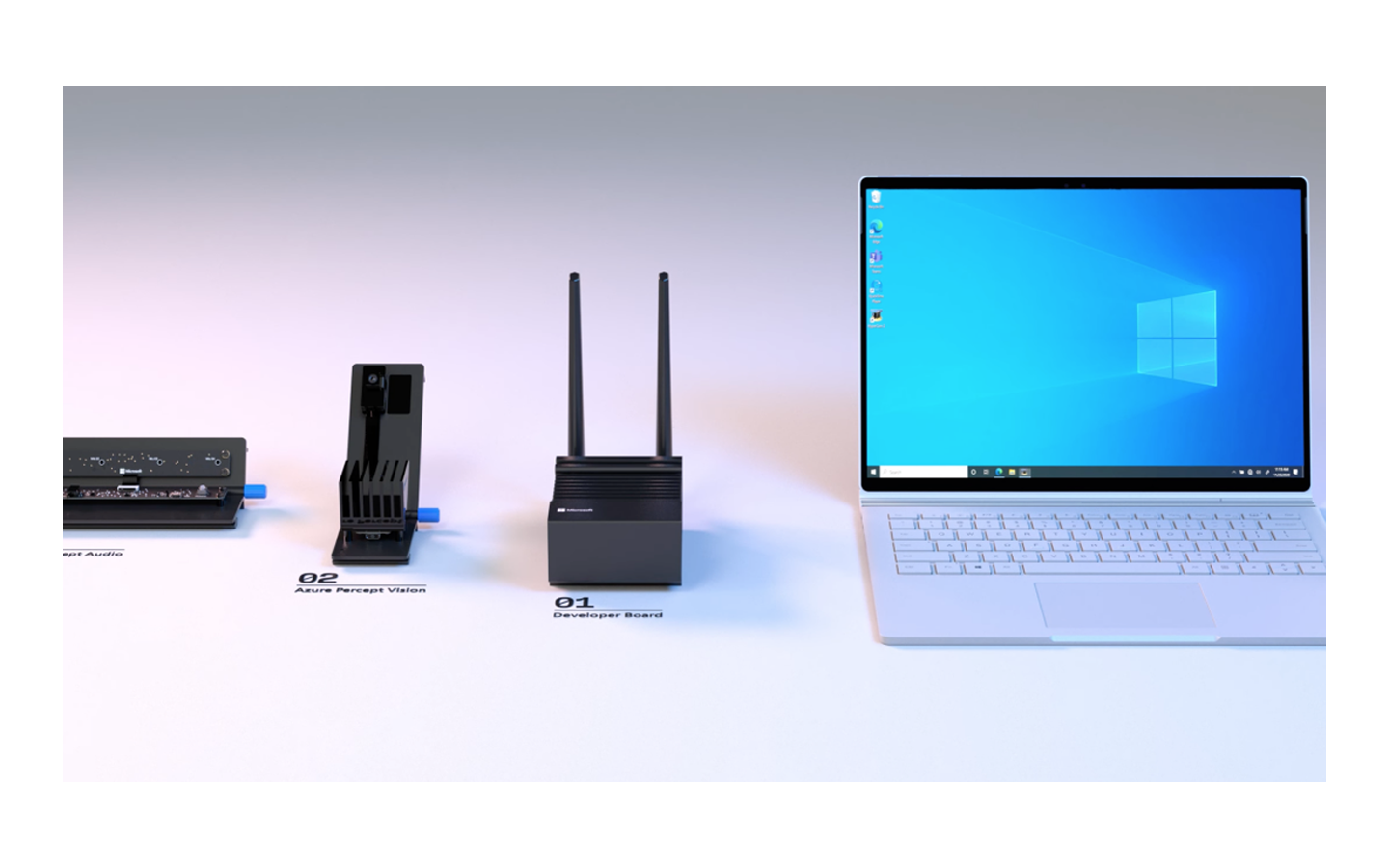

Inspiration + Design Principles
Defining foundational design principles helped guide our work from concepts to reality.
We looked at products that embraced raw components as a defining feature to both form and functionality.








Our Process
Led by our newly defined design principles, we envisioned several architectures with CAD renderings and low-fidelity mockups. The team prioritized features,
explored colors, materials, finishes, and refined the out-of-box experience. Concepts were shown to potential users and vetted for their utility and cool factor.
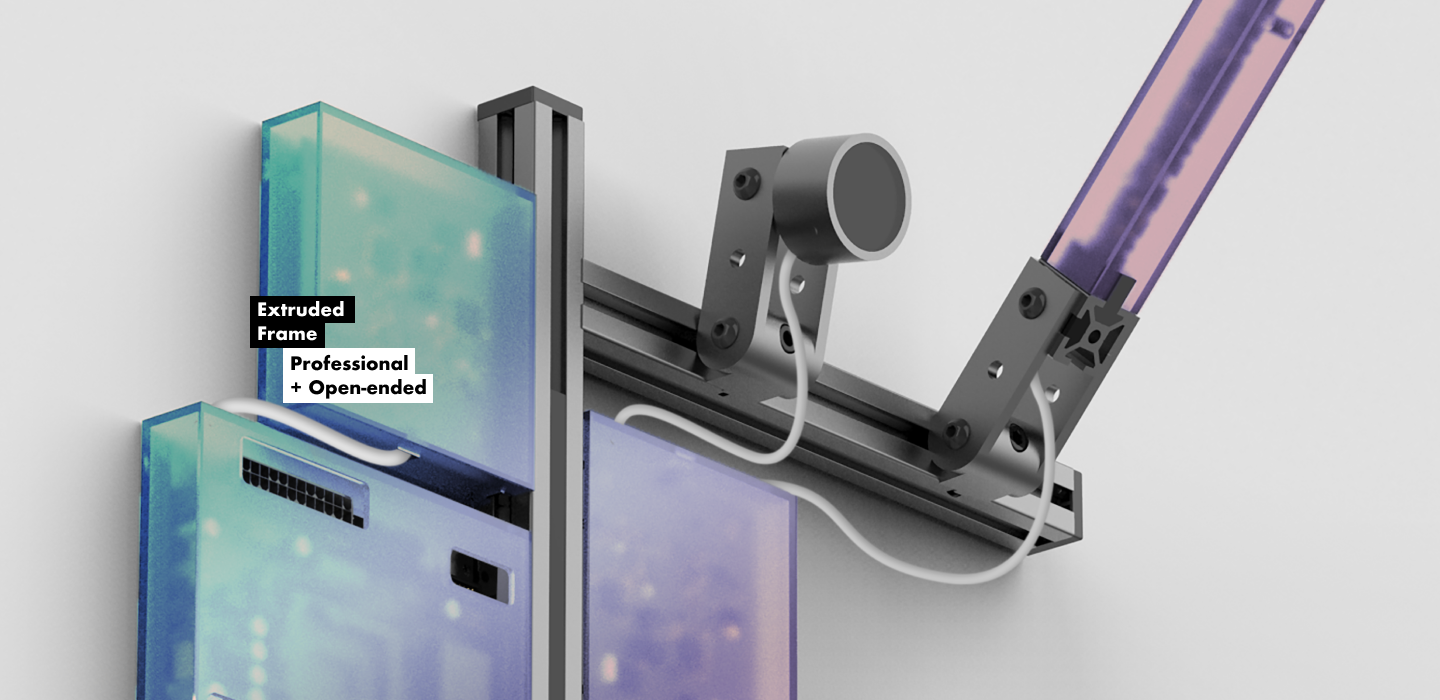



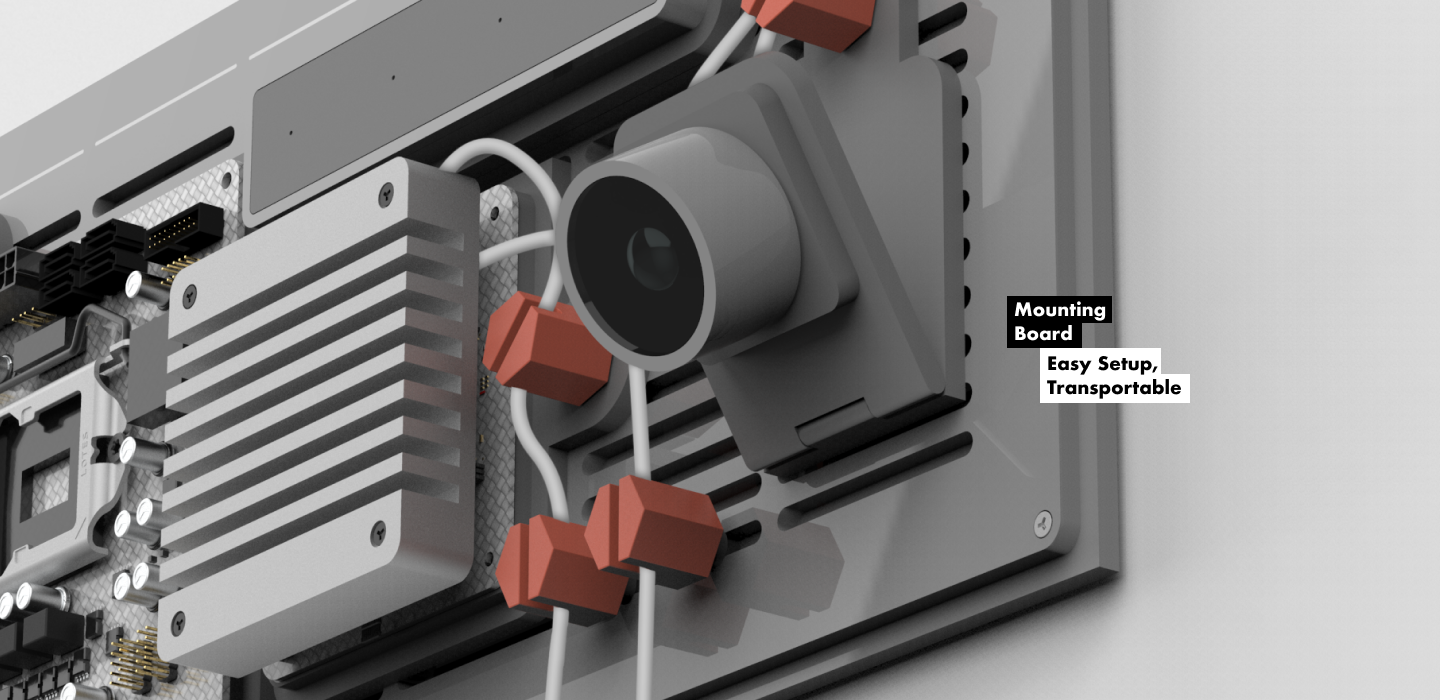

Envisioning the Platform
Self-connectivity, flexibility, immediacy, and longevity were critical considerations for each concept, and they each balance these needs in different ways. We explored a T-Rail extrusion platform that integrates with existing robotics and existing prototyping systems as well as a modular frame that makes the self-attachment of components simple to install.
The mounting board concept ensured the out-of-box setup was immediate and intuitive while the bent sheet metal tabs are visible due to their lightweight and flexible nature. After refinement and prototyping, we chose the T-Rail platform as the best solution to develop Azure Percept DK due to its ubiquity in engineering teams around the world.
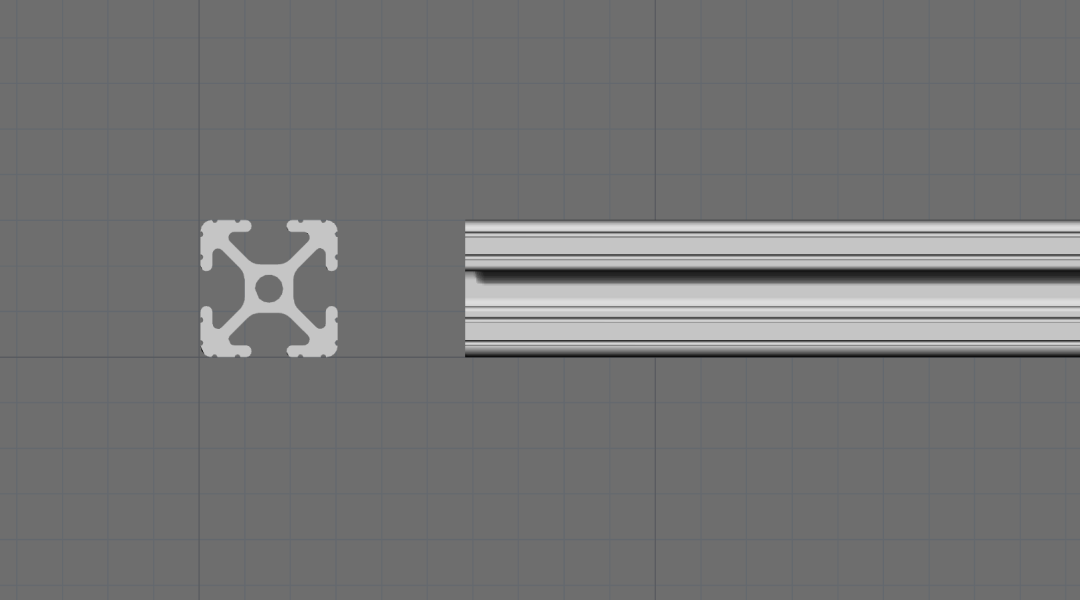

80/20
Aluminum
Extrusion
80/20 is a professional grade erector set in which extruded rails and various parts attach themselves with a t-slot fastener. 80/20 is a favorite platform for people who build robots, technical workstations, and high-tech prototypes.
We incorporated a standard 80/20 T-shape into the design of the three IOT components for instant integration into the system.


An
All-in-One
Box
We designed a box that doubles as a base station and a convenient carry case when being transported. Effortless setup was a top priority; every Azure Percept DK comes pre-mounted on a length of 80/20 aluminum extrusion—so users can immediately start building and programming their configurations on day one.
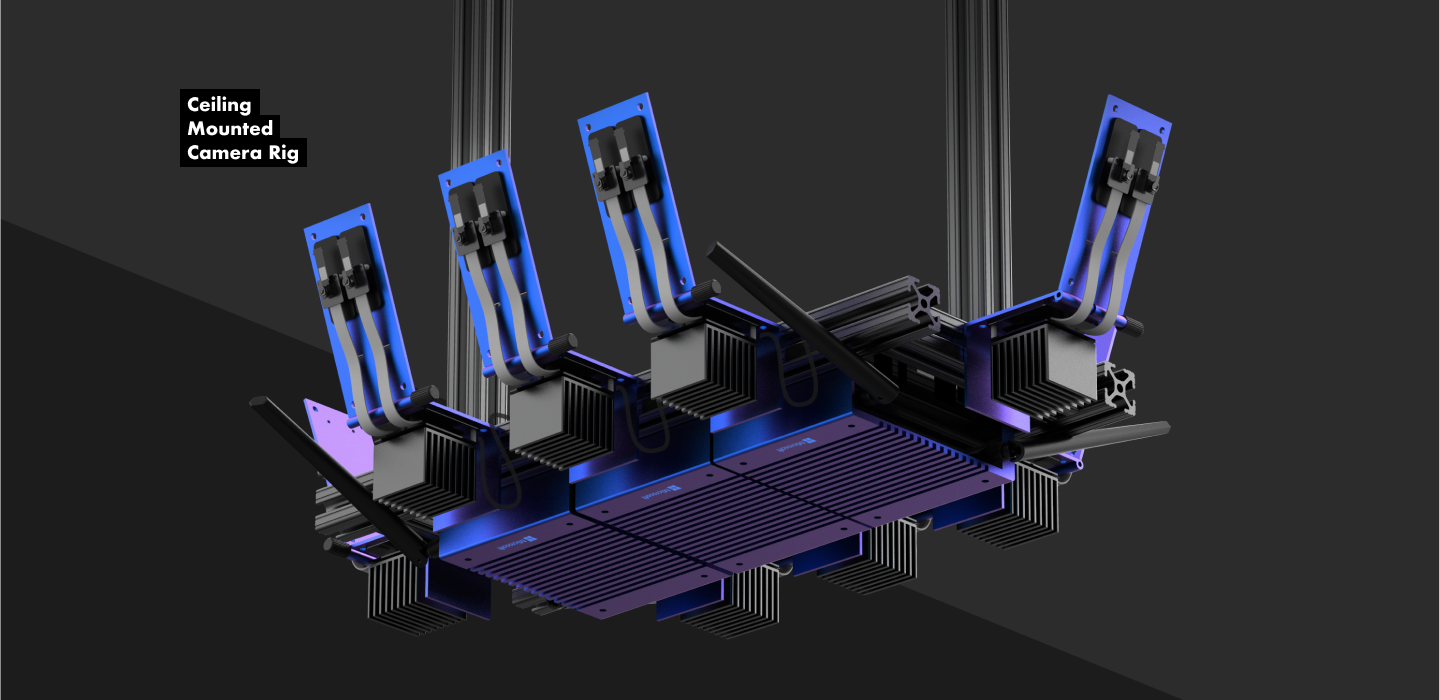

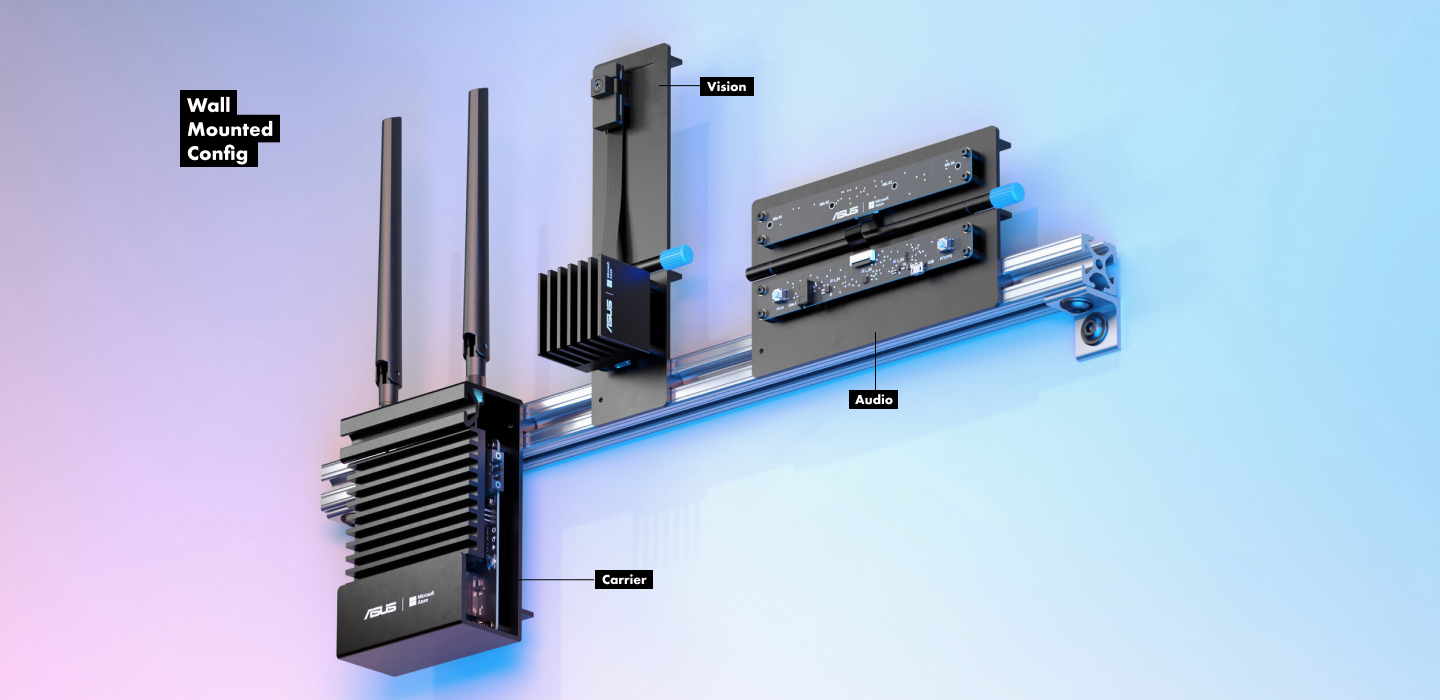

Powerful,
Flexible,
Functional
We helped to bring the Azure Percept DK platform to life with a design that is powerful enough to prototype for production yet flexible enough for any type of project.
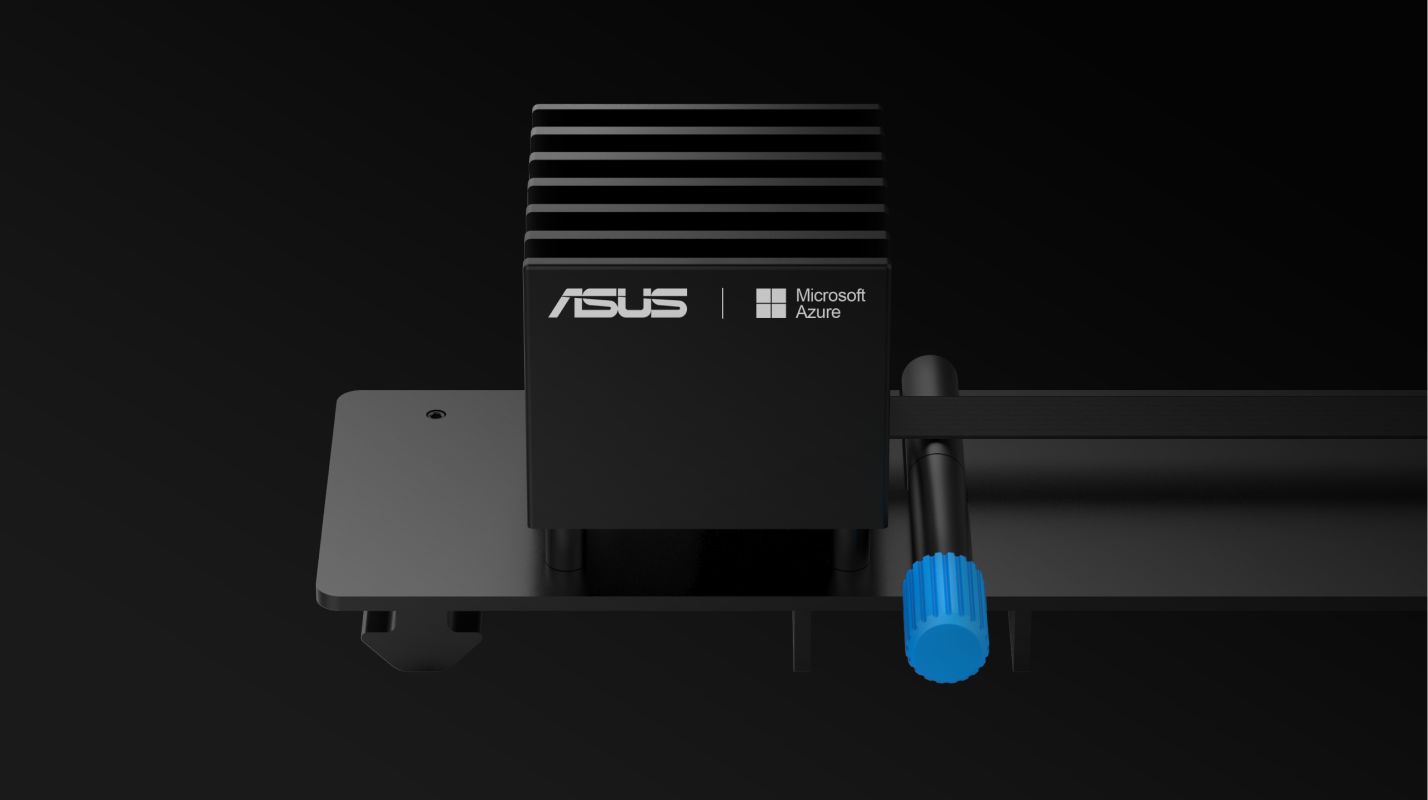

Azure Percept
Development Kit
in the World
Azure Percept DK is already having immediate impact in the world of prototyping: car manufacturers are improving object recognition in AI driving systems, municipalities are monitoring traffic to help pedestrians stay safe on our streets, and schools are building robots.
